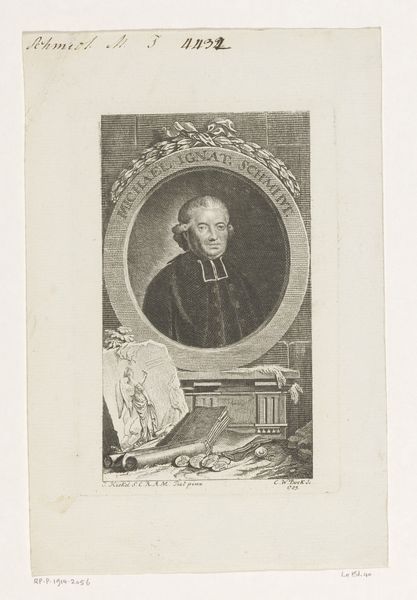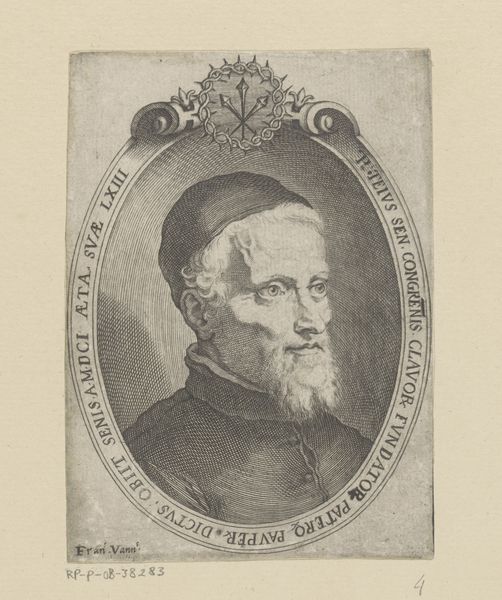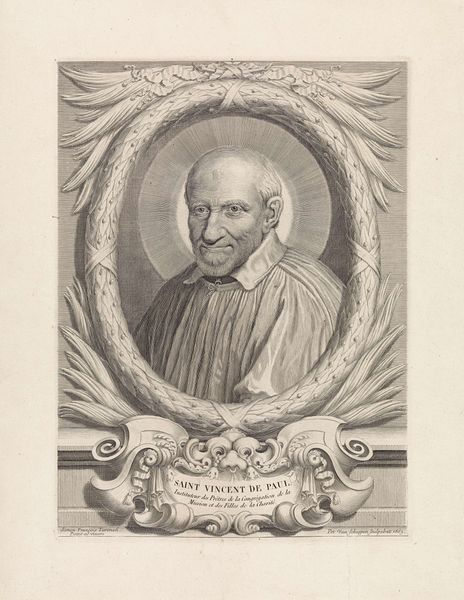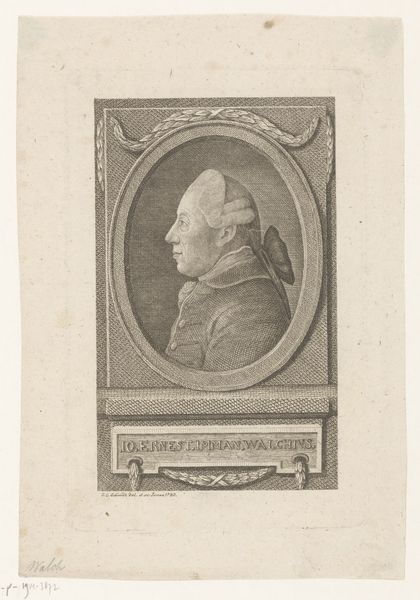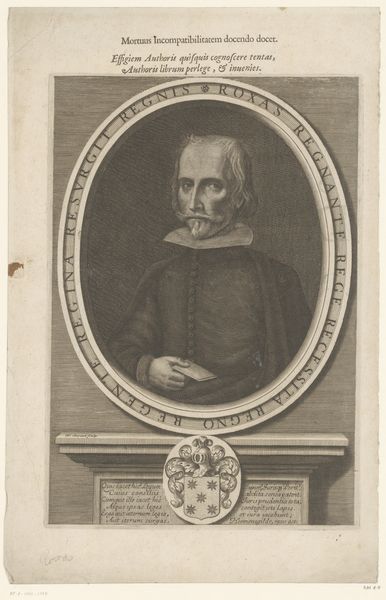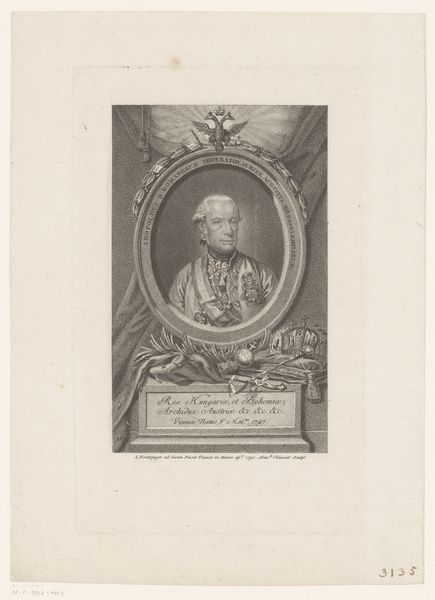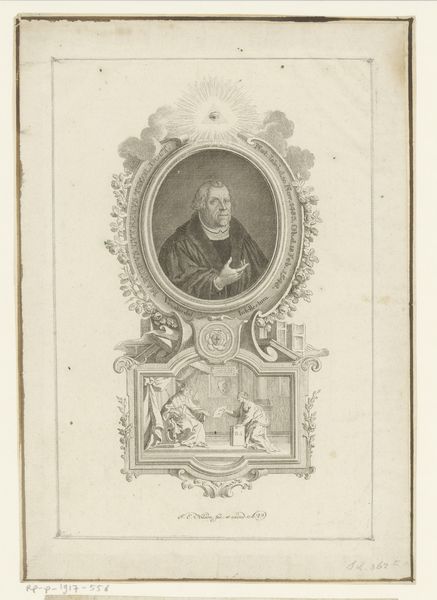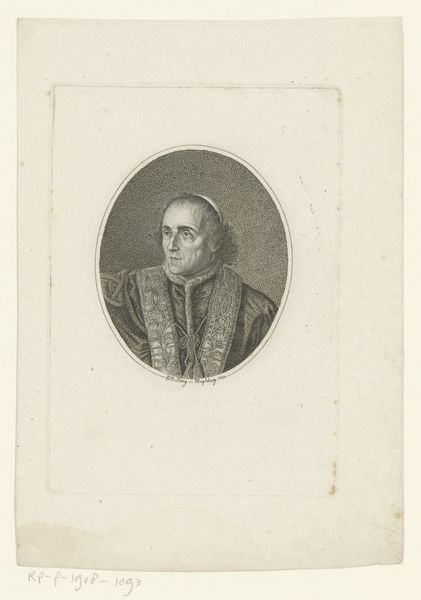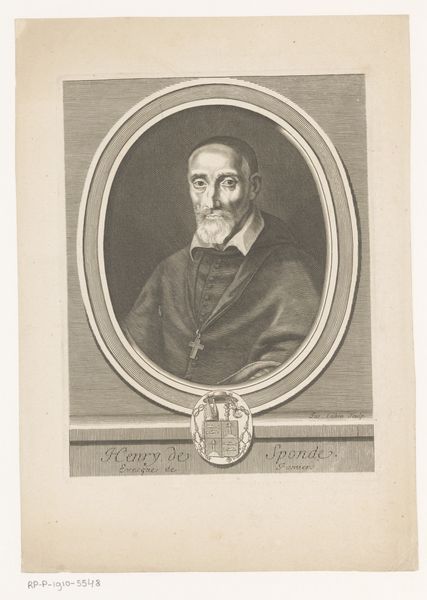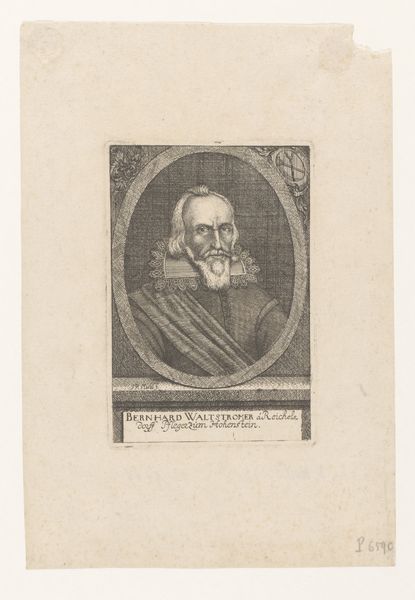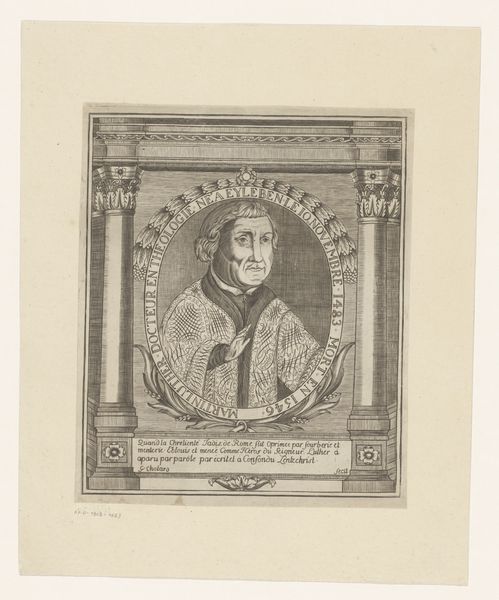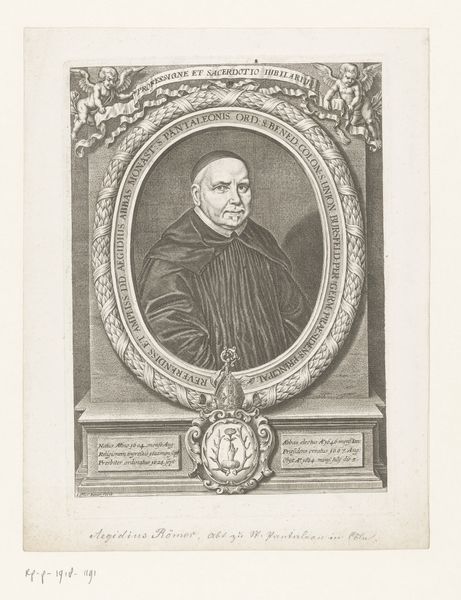
Portrait of a Cardinal in Bust-Length in a Cartouche (design for a title page or frontispiece of a book) 1700 - 1740
0:00
0:00
drawing, print, engraving
#
portrait
#
drawing
#
baroque
# print
#
etching
#
history-painting
#
engraving
Dimensions: Sheet: 8 1/8 × 5 9/16 in. (20.7 × 14.1 cm)
Copyright: Public Domain
Curator: Here we have an intriguing piece, a "Portrait of a Cardinal in Bust-Length in a Cartouche" from around 1700 to 1740, attributed to an anonymous artist. The work, held here at the Met, employs engraving and etching, hinting at its function as a design for a print, likely for a book's title page. Editor: My first thought is how striking the monochromatic color is—the sepia tones really draw you in. It feels both aged and timeless, this singular color suffusing the man's face with solemnity. Curator: It’s compelling to consider the reproductive nature of prints in that era. This piece wouldn't have been intended as a unique object but as a template, a means of disseminating the Cardinal's image. Think of the labor involved—the engraver meticulously translating a possibly painted portrait into a printable matrix. Editor: Absolutely, but let's focus on what that matrix achieved! Notice the elegant oval framing, and how the swirling baroque cartouche anchors the figure. The lines around his face—look at the wrinkles and creases—give an astounding sense of presence despite the distance of time. Curator: The decision to depict him within a cartouche does emphasize his status, certainly. However, the engraving and etching processes were accessible and often collaborative ventures. Who commissioned it? For what purpose? What specific printing house or workshops were involved in production? These details of its social and economic origins add depth to our viewing. Editor: True, those are valid questions to consider when we address its social implications, but can we disregard that intense gaze? Or how light dances on his robes versus the tight control evident in rendering his face? Formally, there's such balance and skillful contrast at play, it transcends the purely functional aspect of printmaking. Curator: I suppose for me, I’m most curious about the circulation of the print, not only throughout the religious networks that Cardinal may be affiliated to but also as a piece in commercial networks. This is what provides clues to understanding his significance in society. Editor: It seems the tension between exploring materials and pure visual appreciation gives us separate yet valuable understandings of what is happening in the picture. Curator: I concur. Approaching this work through material analysis allows us to think about its place within a specific period of image production. Editor: And perhaps together, it grants viewers different angles, like looking through the lenses of history.
Comments
No comments
Be the first to comment and join the conversation on the ultimate creative platform.
